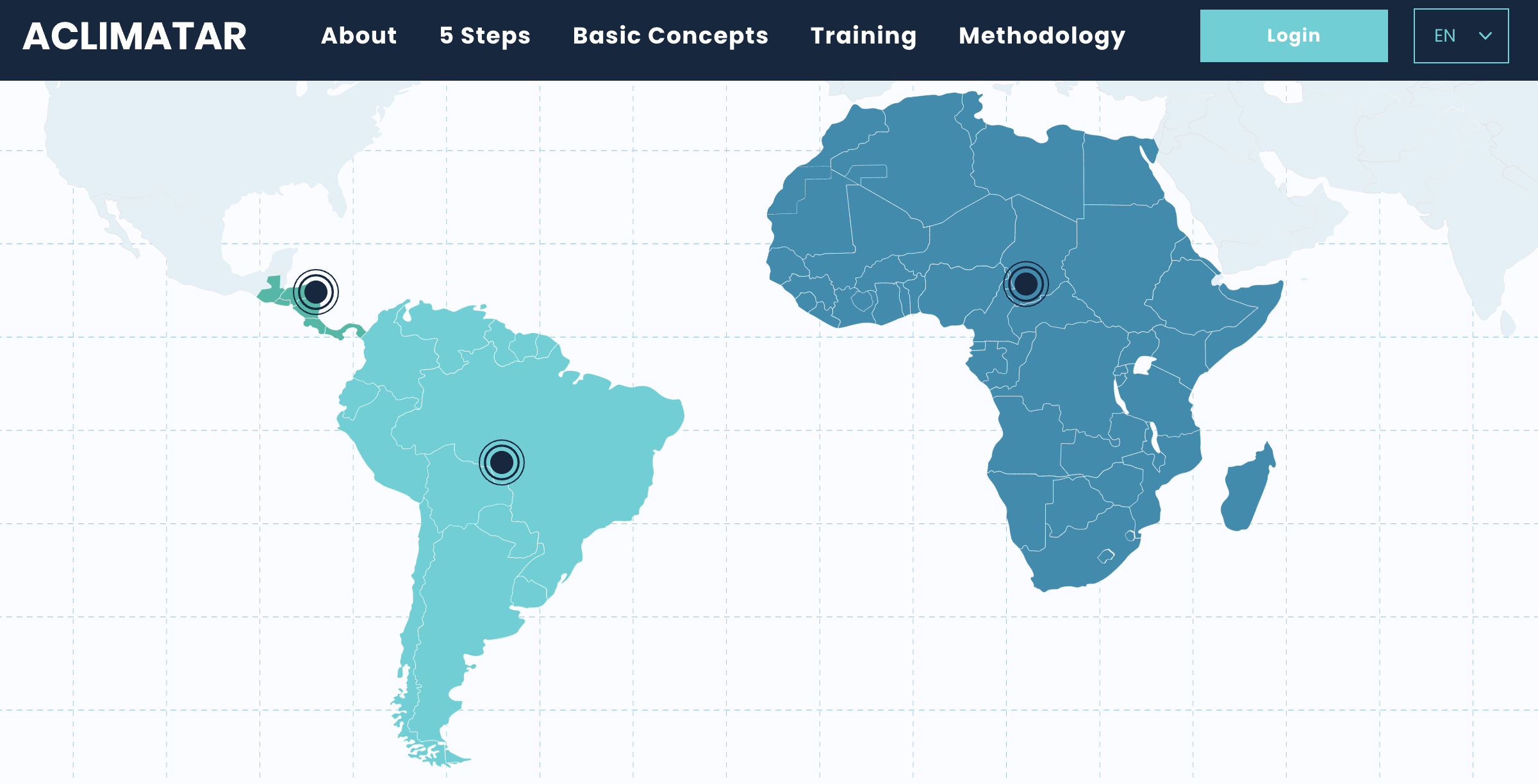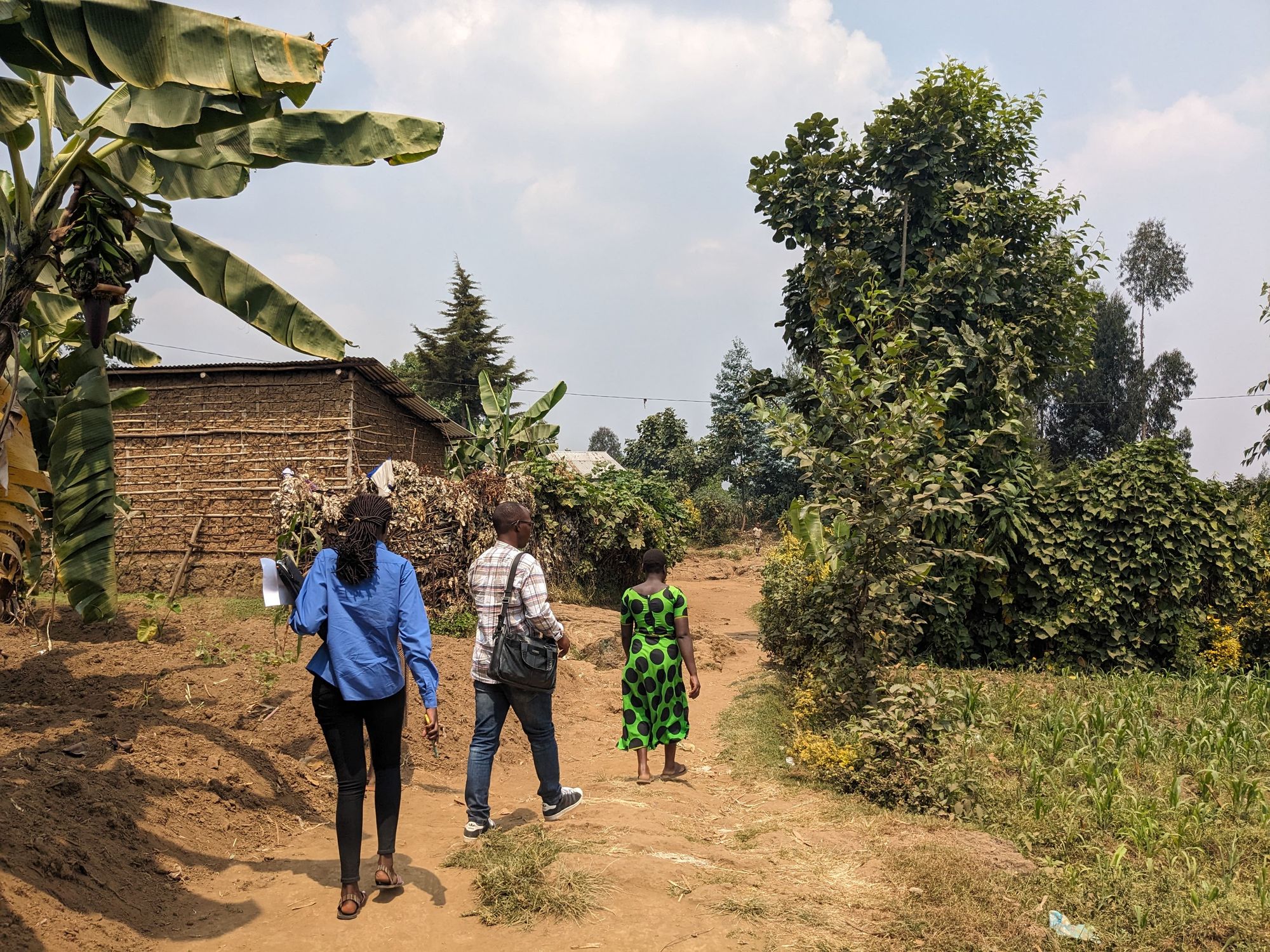The Artemis project aims to enhance bean breeding programs in Africa with AI-powered phenotyping. To ensure the technology effectively supported breeders, the teams' initial focus was deeply understanding the users and their context in Tanzania. We supported this process with exploratory fieldwork and visualizing insights to guide the development team.
In a world where the severe impact of climate change and population growth strain global food systems, the ability to rapidly breed resilient, high-yield crops is more critical than ever. Phenotyping - the science of observing plants and selecting standout traits for mulitiplication - is a cornerstone of crop breeding. Image recognition and Artifical Intelligence (AI) unlock new possibilities to support this process, capturing plant data at unprecedented scale and precision. Yet, despite this leap forward, the technology remains out of reach for local breeders, held back by high costs and limited access.
Persona development for digital phenotyping tools - Are we building the solution right for intended users?
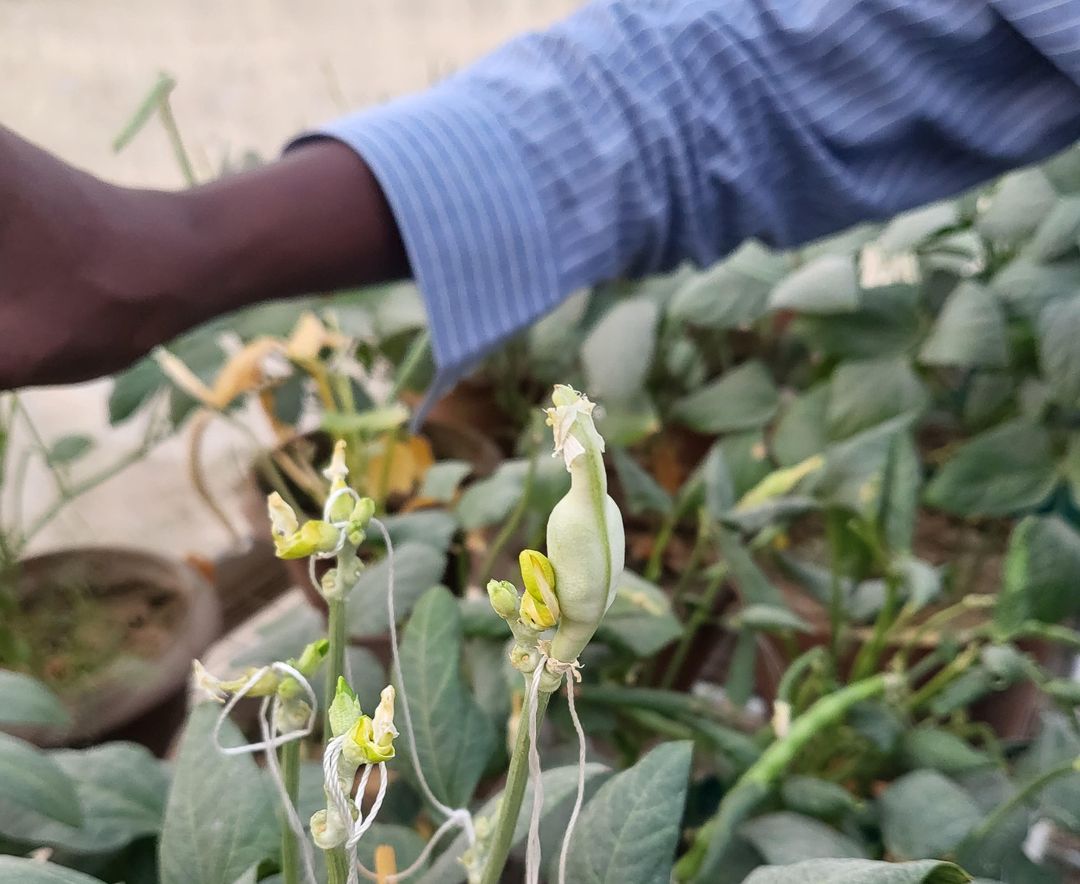

How might we design digital phenotyping tools that truly meet the needs and workflows of bean breeders in Africa?

Breeder Personas, End-to-End Experience Maps: Turning Insight into Direction
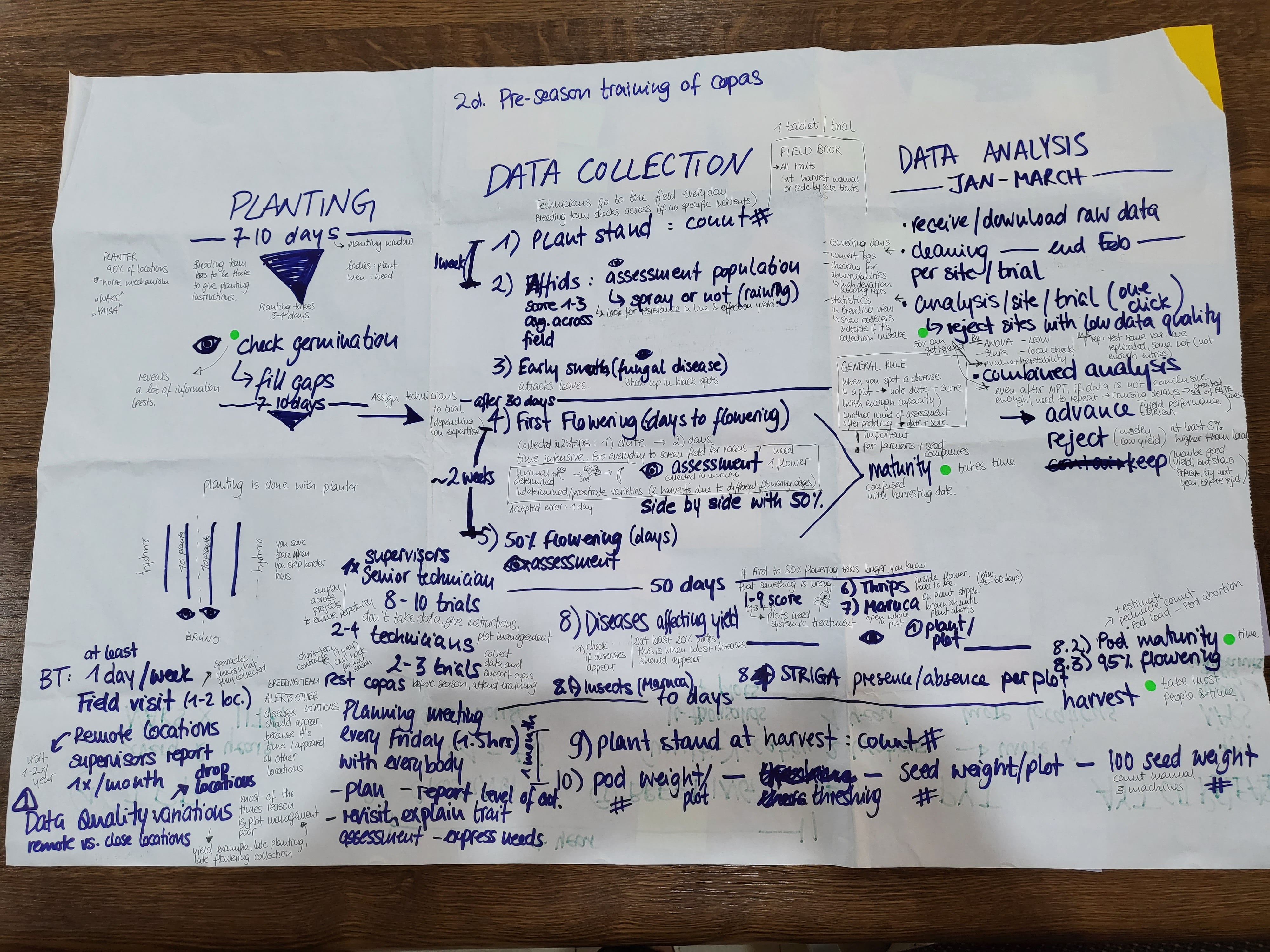
To ensure the development of a truly user-centered Minimum Viable Product (MVP), we conducted a thorough analysis and visualization of core user flows and breeder personas. These insights were derived from in-depth interviews and field observations with national breeders and their teams, mirroring the approach described in the Artemis project. By immersing ourselves in the daily realities of breeding programs—such as those in Tanzania—we gained a nuanced understanding of the challenges breeders face and the opportunities for digital tools to streamline their workflows. The resulting design artifacts, including detailed personas and experience maps, served as a compass for our team. They guided the iterative development of prototypes for a digital phenotyping tool, ensuring that each feature aligned with the actual needs and practices of breeders. The MVP was then rigorously tested in multiple iterative rounds, directly in the field with breeding teams.

User flows and User Personas are based on rigorous qualitative reserach:
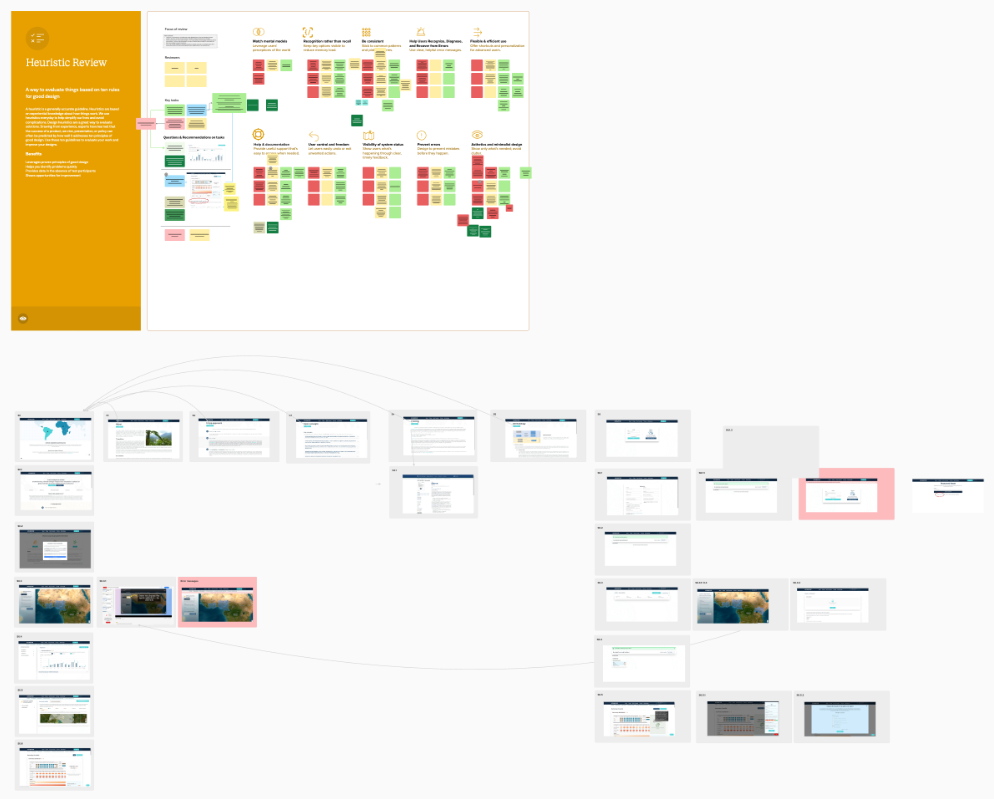

A shared understanding about phenotyping practices and needs, visualized and communicated via:
1. Breeding journey map
2. Tailored user profiles

Breeders face significant constraints in using digital tools for phenotyping, as for example resource scarcity, lack of digital infrastructure, or digital literacy. Different roles (lead, coordinator, technician) have distinct needs, perspectives, and concerns regarding new technology (e.g. efficiency gains vs. learning curve, or data privacy). Understanding the full breeding cycle context is vital for designing relevant tools.
The resulting User Personas and Experience Maps provided
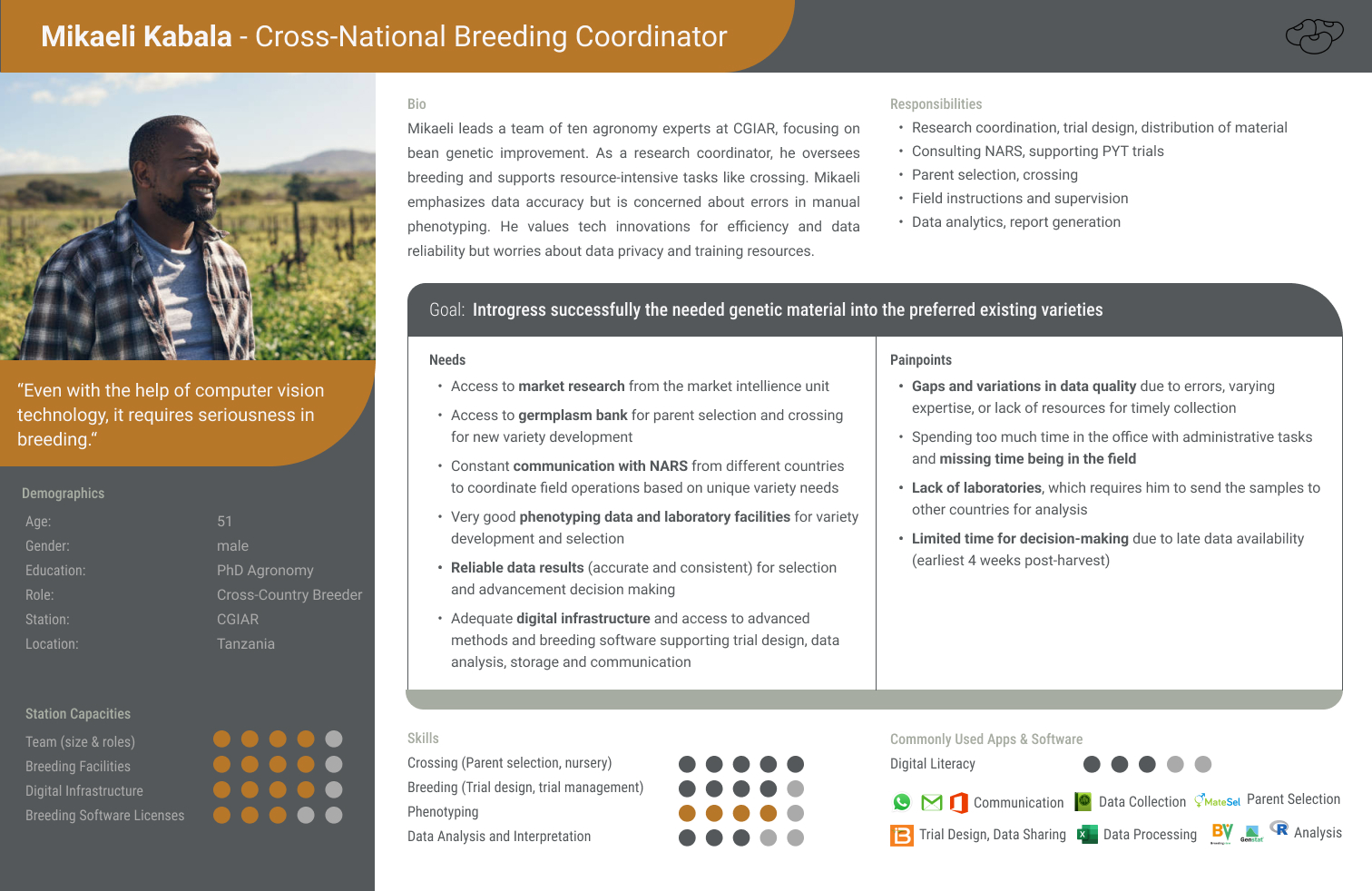

The combination of setting up a product workflow and team combined with in-depth user research enabled us to make data-driven design decisions on key turning points:
We also built a design system that ensures intuitive usability, consistency, and visual recognition across the product.
As a result, the project saves future costs on in-person training and onboarding, since the interface is self-explanatory. New products in the pipeline can leverage this design system and adapt based on collected usability data. Finally, we expect higher adoption rates — supported by a group of committed brand ambassadors from the breeding teams, who were involved in the innovation process and benefit from a seamless transition from the fieldbook to the Artemis app (ONA).


"Personas and experience journeys empowered us to design our tools in the right way, so that they meet real needs and integrate seamlessly into breeding practices."
Berta Ortiz Crespo
User Experience Design Specialist

Our exploratory research services comprise all necessary steps to set your project up for user adoption and scale. We help you understand and integrate user needs in early stage prototyping and throughout the innovation development process. It’s ideal for:
We customize every project to your needs. Whether you’re planning a redesign or just want an expert outside perspective - we’ll help you scope the right approach.
Working with design artefacts like Personas and journeys is a tested and proven way to ensure user-centeredness from the start. — Aline, Design & Communication Lead | Glashaus Innovation

